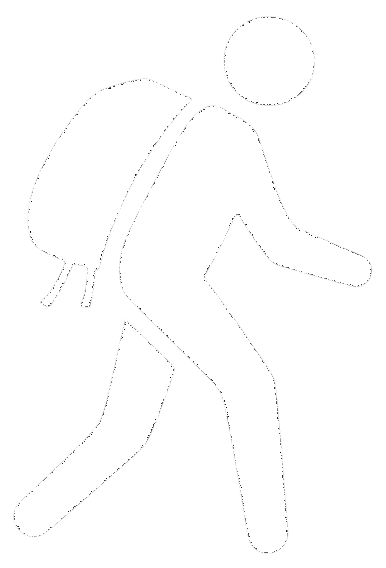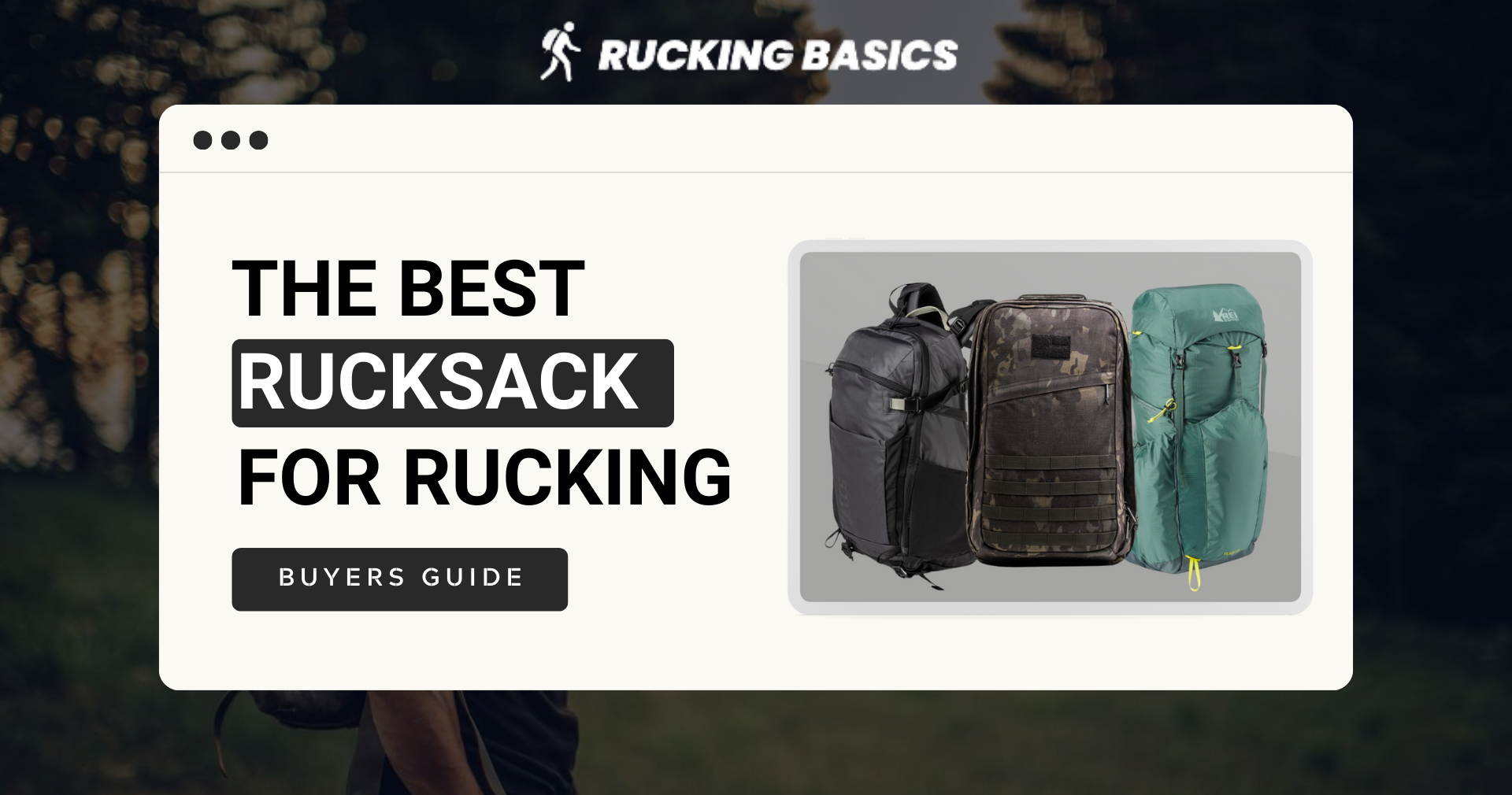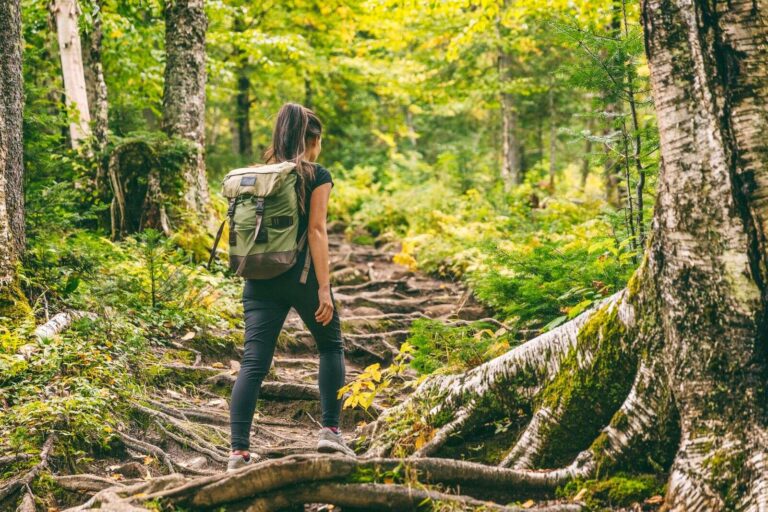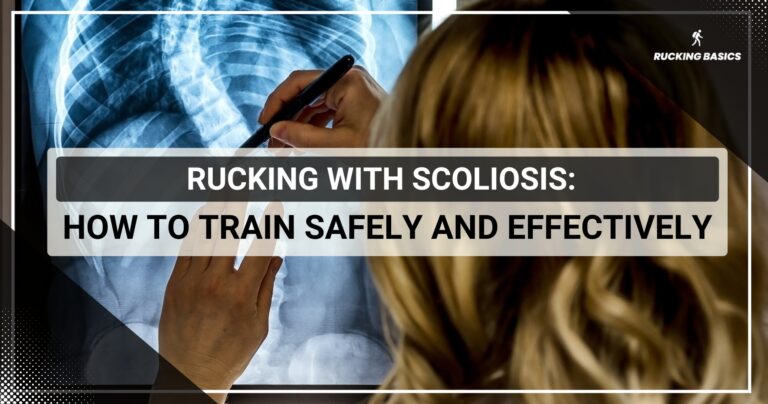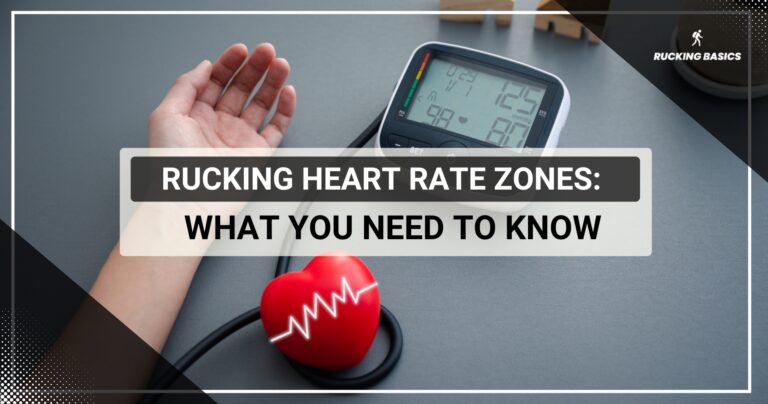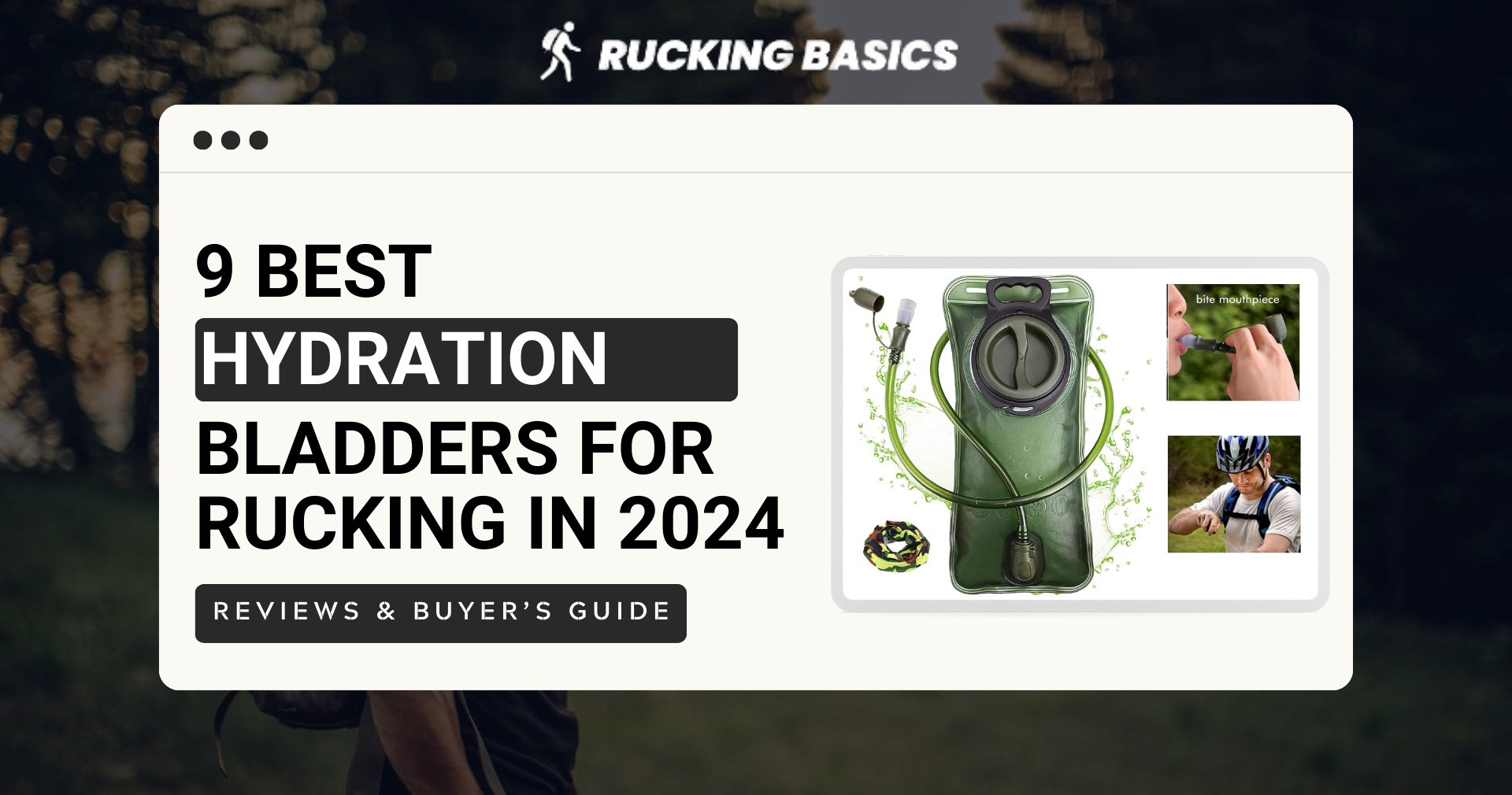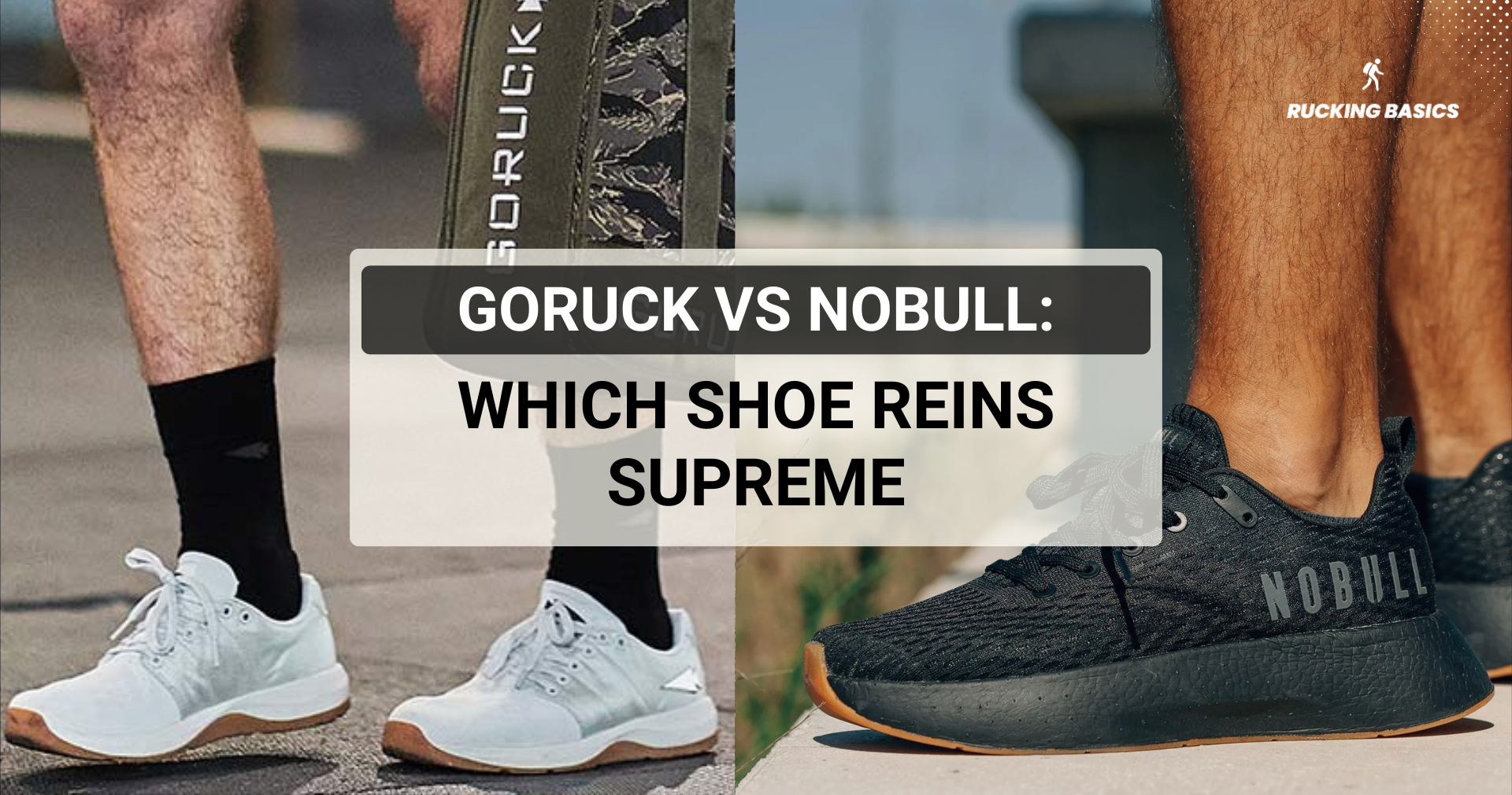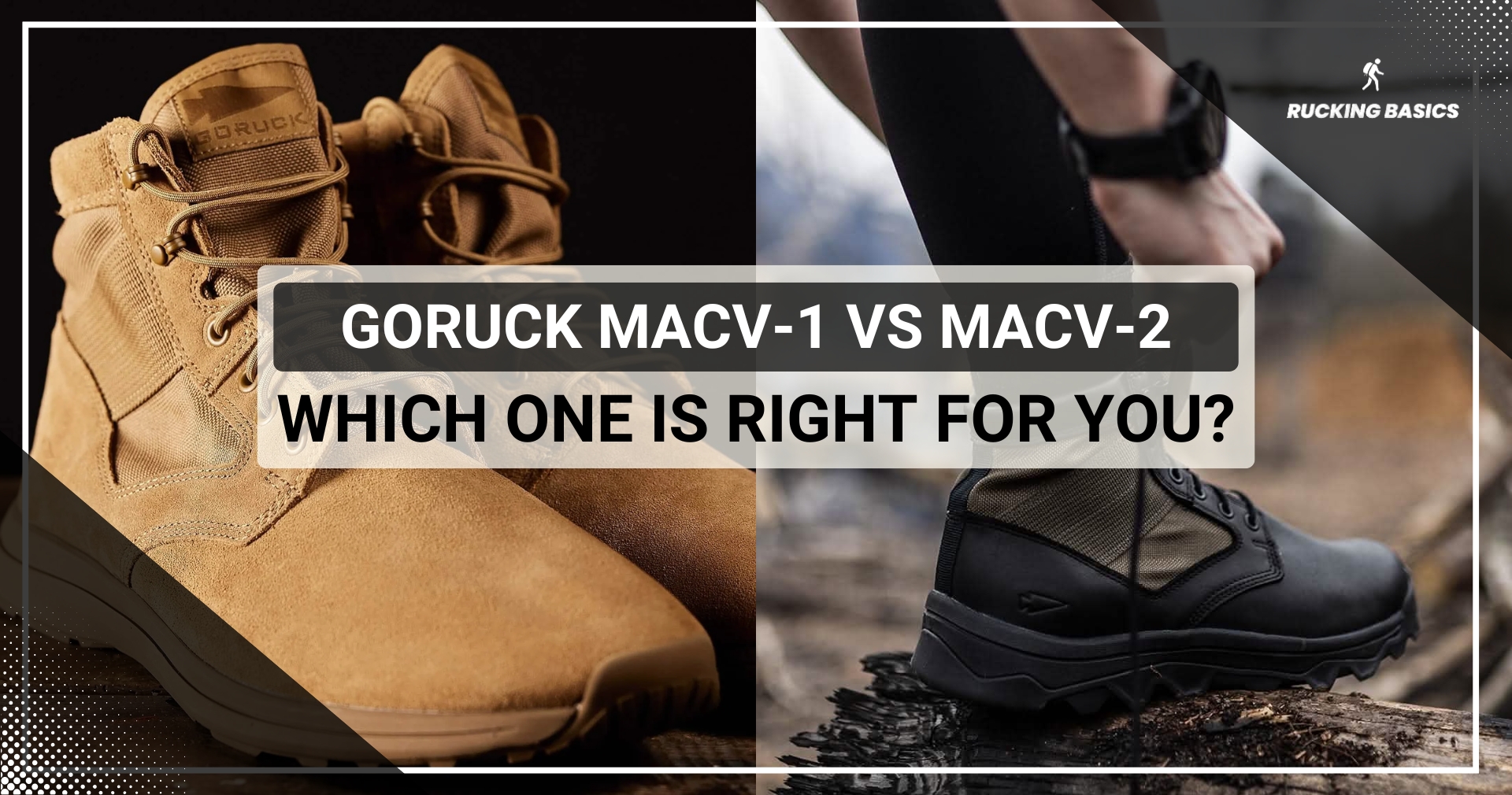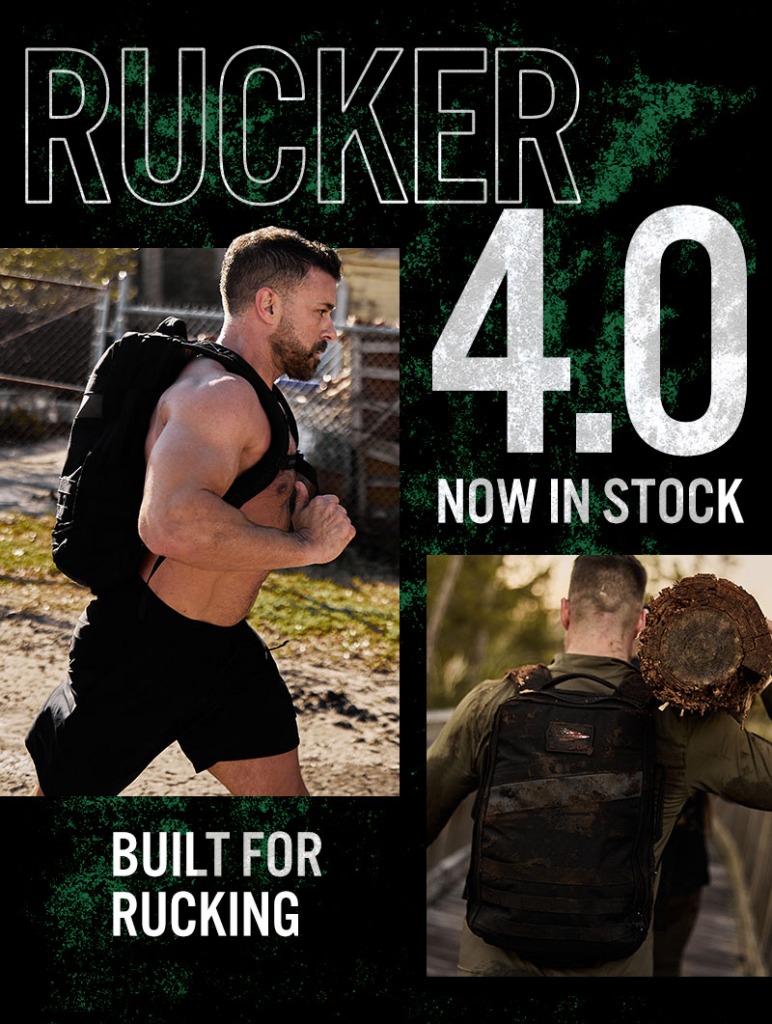We all fell in love with rucking, a blend of hiking with a weighted rucksack, because of its fitness benefits, practical training applications, and being one of the most satisfying outdoor activities.
But are you aware that choosing the best rucksack for rucksack is equally crucial for comfort, performance, and longevity in the sport as rucking shoes or boots? Yes, without a proper rucksack, you will struggle, and it’s even possible you will do this activity less often because of that.
That’s why we decided to use all our knowledge and experience to create this guide, which aims to provide a comprehensive overview and help you select the best rucksack for your rucking needs.
7 Best Rucksack for Rucking
You probably have heard of most or all of the manufacturers we will mention below, but these are the best models among the many that they offer.
Best Overall Rucksack for Rucking – GoRuck GR2 – USA
Why is GR2 the best overall? You can use it for practically everything—short or long rucks, as an everyday backpack, or as hand luggage since it’s TSA carry-on compliant. It fits in overhead compartments perfectly, or you can put it between your legs.
With this model, GoRuck managed to improve the experience even more.
First off, the build quality is phenomenal. It’s made from 1000D Cordura, which feels like it could survive just about anything.
Comfort-wise, the GR2 really stands out. The extra padded straps and top handle make a difference once you put heavy gear on your back. It doesn’t dig into your shoulders or back, even on long days.
One of the best features is how it opens flat. Packing and finding your stuff is so much easier compared to traditional rucks. The organization is top-notch, with two main compartments and a bunch of internal pockets. The outer compartment has mesh zippered pockets and a built-in field pocket, while the inner compartment has more pockets for keeping everything in order.
The laptop compartment is another highlight. It’s bombproof—literally designed to protect your laptop in rough conditions. With extra reinforcement and a false bottom, I felt totally confident that my laptop was safe, no matter what.
Customization is also a big plus with the GR2. The external and internal MOLLE webbing lets you add extra pouches and gear, so you can set it up exactly how you like it.
Best Affordable Rucksack – Rei Flash 55 Pack
After putting the REI Co-op Flash 55 pack through its paces on a multi-day hike (almost a week long), I can confidently say this is a versatile and reliable pack for under $200, perfect for various adventures.
The lightweight and durable construction was the first thing I noticed. It’s a bit robust, so I didn’t know what to expect when I first saw it, but the pack doesn’t weigh you down, making it a great option for long hikes. My favorites are the adjustable torso feature, 3D contoured hip belt, and ventilated back panel.
Another highlight for me was the roll-top lid. It offers excellent weather resistance and makes compressing and adjusting the internal volume effortless. The pack’s ability to adapt to the shape of your load with the Packmod compression straps is brilliant. I think other manufacturers should definitely consider adding these features.
It’s easy to reach a water bottle and snacks, while if you’re looking to shed some weight, pockets can be removed to save a few ounces.
I can talk much more about nine exterior pockets, the durable water repellent (DWR) finish and many other things, but you should try this Climate Neutral Certified rucksack yourself.
Best Military-Grade Rucksack – 5.11 Skyweight 36L Pack
I can’t say this backpack exceeded my expectations just because I always expect the best from 5.11, but it deserves 9.5/10.
If you want a durable yet light backpack, the Skyweight is for you. We can thank 330D ripstop nylon for those features. It felt rugged enough to handle rough conditions but light enough not to be a burden.
Even after hours on the trail, the airflow channel kept my back cool, preventing the usual sweat buildup I hate so much.
One of my favorite features is the clamshell opening on the main compartment. It made packing and accessing my gear so handy. The dual external stretch pockets were perfect for keeping water bottles within reach, and the front “shove-it” compartment was great for stashing items I needed to grab quickly.
The safety orange rain cover was easy to deploy and kept my gear dry for two hours when the weather turned bad.
The hip belt is removable, which I appreciated when I wanted to lighten the load. It also features a quick-release buckle and MOLLE webbing for additional attachments.
Overall, the Skyweight 36L Pack is a fantastic blend of military functionality and comfort.
Best Large Capacity Rucksack – Granite Gear Blaze 60 Unisex
I recently had the chance to try out the Granite Gear Blaze 60, and it truly lives up to its reputation. I have known about this model for a long time since Backpacker Magazine awarded it the “Editor’s Choice” a few years ago, and it’s big, comfortable, durable, and incredibly functional.
The feature I paid the most attention to was the A.C. (Air Current) frame. The ability to lock in the fit precisely to my torso size made a noticeable difference in comfort, especially with the fully adjustable Re-Fit hip belt and molded foam back panel.
The Blaze 60 is built to last. The 210D Robic nylon UHMWPE triple ripstop fabric in high-impact areas is impressively tough.
The storage options are well-considered, with large fabric side pockets, a tall stretch woven front pocket, and dual large hip belt pockets that easily fit plus-sized smartphones. The hydration pack port and internal sleeve for the hydration bladder were great for staying hydrated on the go.
All things considered, if you’re looking for a reliable, high-performing pack for long-distance hikes, the Blaze 60 is worth considering.
Best Rucksack for Long Distances – Mystery Ranch Bridger 45
I have had only a positive experience with Mystery Ranch, so I first used the Bridger 45 on a three-day, two-night rucking trip. I usually test the product first on short distances, but I knew I didn’t have to doubt this model.
This pack is designed to handle a variety of adventures, whether it’s a sunrise-to-sunset day hike or a weekend in the backcountry.
The Endurance Yoke, which uses running vest technology, kept my core cool on grueling inclines. The breathable slim wrap waistband allows you to keep many things in your pack, so you won’t have to break stride. The pack’s harness is impressive; even with a 45-pound load, my back and shoulders weren’t tired even after a longer ruck.
You hard-core ruckers and those looking for a best travel backpack will appreciate a dedicated sleeping bag compartment.
The pack’s durability is top-notch due to the combination of 100D Robic recycled nylon ripstop with 330D Robic nylon in high-abrasion areas and the YKK zippers with a DWR finish.
If you use water bottles instead of hydration bladders, keep in mind that the chest bottle pockets are not the most comfortable. Using smaller bottles might solve this.
Best Rucksack for Beginners – Rei Trail 25 Pack
The REI Co-op Trail 25 can be suitable for a wide range of body types.
And not just suitable, but the comfort level is fantastic. The padded, mesh-covered shoulder straps and back panel provide excellent support and ventilation. The removable hip belt with a web tensioner adds to the comfort by distributing the weight evenly across my hips, making the pack feel lighter than it is.
The storage and organization options are impressive. Although its 25-liter capacity might sound too small, it has just the right amount of space for day-ruck essentials. I loved how the main compartment opens fully.
The interior organization is well thought out, with a sleeve for a hydration reservoir, a zip pocket, and a mesh pocket for a bottle. This keeps everything organized and easy to find. Plus, the bungee accessory straps are a nifty feature for attaching extra gear, and they tuck away neatly when not in use.
The Trail 25 does not disappoint in terms of durability. Its ripstop nylon body and recycled oxford nylon bottom are tough and resistant to abrasion.
Best for Women – Osprey Eja 58
We already feature this rucksack in our “Best Women’s Rucking Backpack For 2024,” and recently, my girlfriend took it for another longer ruck.
Since she has a small frame, so she is always after lighter hiking backpacks. She was thrilled with how light the Eja 58 felt, even when fully loaded. The fact that it’s made from 100% recycled materials was a big plus for her, as she’s very eco-conscious.
One of the standout features she mentioned is the AirSpeed® suspension system. The ventilation it provides is fantastic, keeping back cool and dry even during strenuous uphill climbs. The adjustable torso length allowed for a custom fit, which made all the difference on longer treks. She found the injection-molded ladder adjustment system easy to use, and the pack’s stability was impressive.
Another interesting feature is a removable floating lid that can be replaced with the integrated FlapJacket.
The Eja 58’s durability is outstanding. Additionally, the Stow-on-the-Go trekking pole attachment system can be a lifesaver during more technical sections of the hike.
Features to Consider When Choosing Best Rucksack
Numerous features can influence whether you will really enjoy your new rucksack or just use it because you already paid for it and are now stuck with it.
Size and Weight
A 20-30 liter rucksack is ideal for most day rucks, providing sufficient space for essentials such as water, snacks, a first aid kit, and extra layers. But you will want to extend your stay in nature over time and bring even more things.
For lengthier or more intensive rucks, a 40-50 liter rucksack is necessary. However, this does not mean that bigger is always better. A rucksack that’s too large can be too bulky, while one that’s too small won’t accommodate all your gear.
Regarding the weight of the rucksack itself, lightweight ones are easier to carry, yet it won’t be helpful if you can’t fit everything in there. Try to find a rucksack that strikes a balance between its base weight and the durability/functionality needed for your rucking activities.
Material and Craftsmanship
The material and craftsmanship of your rucksack are probably the most critical features. You need to look for high-quality materials suitable due to their excellent resistance to wear and tear.
Additionally, check whether that exact model has reinforced stitching, robust zippers, durable buckles, etc.
Comfort
It could be the biggest, most durable rucksack made of gold. Still, if it’s uncomfortable, you won’t be able to ruck—an uncomfortable one causes way too much unnecessary strain and fatigue.
Adjustable shoulder straps, padded hip belts, and back panels are some of the features that influence comfort. A hip belt transfers much of the rucksack’s weight from the shoulders to the hips, reducing shoulder strain. Compression straps help stabilize the load by preventing items from shifting. They also help keep the rucksack’s shape and improve balance.
Waterproofness and Breathability
Once you are in the woods or on a trial, you are exposed to different weather conditions. You have two choices: to buy a waterproof rucksack or to let the rain and other weather conditions cut you short. I think I know what answer you will give.
A weather-resistant rucksack ensures that your belongings stay dry and safe. Look for rucksacks made from waterproof materials, with sealed zippers and included rain covers. Sometimes, the rain is too heavy, and only a cover can provide 100% protection. These features help protect your gear from rain, snow, and moisture. Weather resistance is particularly important for ruckers undertaking long-distance rucks where the weather changes rapidly.
Good ventilation is also very important. It reduces sweat buildup, directly increasing comfort during rucking. Look for mesh back panels and ventilation channels.
Design
Design is justified at the bottom but should not be overlooked. Tactical designs often offer practical benefits such as additional attachment points and rugged construction, while more civilian styles may suit urban ruckers looking for a less conspicuous appearance. Choose a peak design that aligns with your style and the environments in which you’ll be rucking.
Buying Tips
After carefully considering the main features of rucking rucksack or hiking backpack, you should definitely also take a look at a few buying tips I have for you. They are more general but still very much applicable to buying rucksacks and other rucking gear:
- Consider Brand Reputation – Brand and price are not the sole indicators of quality, but established brands are often a safer bet because you can count on quality and customer service. Brands like GORUCK, North Face, Mystery Ranch, and CamelBak are well-regarded in the rucking community. Choosing a rucksack from a reputable brand can provide peace of mind, knowing you’re investing in a product designed and tested by experts. Of course, that doesn’t mean anonymous brands can’t offer a similar experience; you just have to find it.
- Look for Warranty and Return Policies – A good warranty and flexible return policy can protect your investment. Since you will use it in harsh conditions, the best backpack you choose must have adequate coverage for defects and satisfaction guarantees. A robust warranty indicates that the manufacturer stands behind the quality of their product, offering repairs or replacements if any issues arise. On top of that, flexible return policies give you heartbreak when ordering online.
- Read Reviews and Testimonials – User reviews and testimonials give even more extensive insights. If you know a forum with experienced ruckers or a reliable Reddit page, go and get an accurate picture of what to expect. These reviews often highlight the strengths and weaknesses of different models after prolonged use. That real-world feedback on how they perform under various conditions is handy.
Conclusion
A well-chosen rucksack can make all the difference in your rucking experience, providing the necessary support, durability, and functionality.
Experienced ruckers sometimes advise beginners to wait to buy rucking rucksack. I’m afraid I have to disagree with that. Just because you are an experienced rucker, it does not mean your laptop backpack will be useful for more than just a few rucks.
I’ve shared my favorite picks with you and provided tips to help you decide. This way, you can choose the best rucksack for your needs, without blindly following the ‘Best overall’ label, for example, without even knowing if it is the right model for you.
Don’t hesitate to try different models, read user reviews, and seek advice from the rucking community. Later, please share your experiences and insights with fellow ruckers to help them find their ideal rucksack. We are all a big family that is invaluable in guiding each other towards success.
Frequently Asked Questions
What are the key differences between a rucksack and a regular backpack?
It’s not written in stone, but rucksacks are usually designed for carrying heavier loads. They typically feature more robust construction, with reinforced stitching and durable materials. Most rucksacks include additional support systems like padded shoulder strap, sternum strap, and hip belts. In contrast, regular backpacks are often lighter and meant for everyday use but can break once they face the challenges of rucking.
How do you properly load a rucksack for rucking?
Place the heaviest items close to your back and centered in the middle to lower sections of the rucksack. Distribute weight evenly and secure items to prevent shifting. Ensure essential items are easily accessible in outer pockets or at the top.
Which is the perfect weight for beginners to start with?
Beginners should start with a weight of about 10-15% of their body weight to avoid injury and gradually build up endurance. Starting heavy won’t bring significantly fast progress, but it will almost certainly cause delayed-onset muscle soreness (DOMS) and sometimes even strains and other injuries.
How do you choose the correct size rucksack for your body type?
Measure your torso length and compare it to the rucksack’s size guide. It’s a sure way not to make a mistake. Later, you can fine-tune it to fit perfectly for your body shape and size, but you can’t do it if it’s too big or small.
What are some common mistakes to avoid when buying a rucksack for rucking?
Avoid choosing a rucksack solely based on brand, price or appearance; prioritize fit, durability and functionality. You should check features that are especially important to you as well.
References
Suri C, Shojaei I, Bazrgari B. Effects of School Backpacks on Spine Biomechanics During Daily Activities: A Narrative Review of Literature. Hum Factors. 2020 Sep;62(6):909-918. doi: 10.1177/0018720819858792. Epub 2019 Jul 12. PMID: 31298940.
Walicka-Cupryś K, Skalska-Izdebska R, Rachwał M, Truszczyńska A. Influence of the Weight of a School Backpack on Spinal Curvature in the Sagittal Plane of Seven-Year-Old Children. Biomed Res Int. 2015;2015:817913. doi: 10.1155/2015/817913. Epub 2015 Aug 27. PMID: 26413545; PMCID: PMC4564613.
